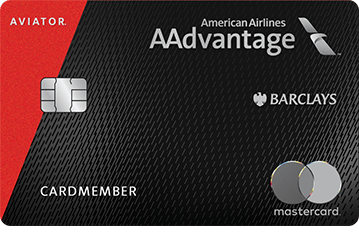The Best Airline Elite Status for 2024

Many or all of the products featured here are from our partners who compensate us. This influences which products we write about and where and how the product appears on a page. However, this does not influence our evaluations. Our opinions are our own. Here is a list of our partners and here's how we make money.
Champagne. Extra legroom. Human decency. These are the perks that come from airline elite status. Whether you’ve enjoyed it in the past or are pursuing it for the first time, you might wonder which airline offers the most valuable elite status program.
Achieving status can cost thousands of dollars and hundreds of hours in flight, so if you’re going after it, you’ll want to try to pick the program that offers the most value. So, who runs the best airline status program? Simply put, Alaska Airlines offers the best overall elite status option for frequent flyers.
To determine this, we ran a comprehensive analysis of every major U.S. airline’s elite status program and determined an “elite earning rate” for each tier within each program.
This “elite earning rate” is the dollar value of the perks offered by a given elite status tier divided by the cost of achieving this tier. For example, if Nerdy Airlines Gold Status provides $100 in value but costs $1,000 to earn, it has an elite earning rate of 10% ($100 / $1,000). The higher the rate, the more value this elite status offers.
Beyond an overall winner, we’ve broken these ratings into four elite status tiers:
Every airline has an entry-level tier, though only a few have the highest ultra level. Those dipping their toes in the elite waters should pay special attention to the former, while savvy business travelers should compare the higher tiers.
We’ve provided a detailed explanation of the methodology and assumptions we used to determine these values at the end of this article. For some, the value of a given program will differ significantly from our estimates based on individual travel needs and preferences.
For example, those who rarely check bags or have an airline credit card that offsets bag fees will get little value from elite bag perks. So make sure to check our assumptions before deciding your own airline loyalty.
Best overall elite status program
Winner: Alaska Airlines
Alaska Airlines wins again in 2024, thanks to strong performance across all its MVP levels. Whether you’re an ultra-frequent flyer or not, you can’t go wrong with earning MVP status on Alaska.
Hawaiian Airlines, American Airlines and United Airlines take the runner-up spots, and Delta Air Lines drops below the pack. Southwest Airlines rounds out the bottom, which is unsurprising for a budget airline that puts less emphasis on high-end elite perks.
Since much of the value for other programs comes from first-class upgrades, budget airlines such as Southwest, Spirit and Frontier are at a natural disadvantage in these ratings, as they lack a first-class cabin.
Best entry-level elite status
Winner: Alaska MVP
Alaska Airlines is popular among West Coast flyers for its high-value rewards program, and our analysis places its MVP elite status at the top of the entry-level heap.
Note: Southwest does not appear in this comparison, as we consider its entry-level elite status comparable with other airlines’ mid-tier status. See below.
The middle of the pack are close calls, with American, United and Hawaiian all within two percentage points of each other.
Best mid-level elite status
Winner: Alaska MVP Gold
Alaska also takes this category with its mid-tier MVP Gold status, followed closely by Hawaiian Pualani Platinum status.
Best high-level elite status
Winner: Alaska MVP Gold 75K
The crowd thins here since Hawaiian and Spirit offer two or fewer elite tiers each. However, Alaska still dominates with its second-highest tier, MVP Gold 75K status, which offers significantly more bang for your elite-traveling buck than others.
The gap between first and second place for this elite status tier is remarkable — 17 percentage points.
Best ultra-tier elite status
Winner: Alaska 100K
Alaska’s ultra-tier MVP Gold 100K status level is a good one, beating United Premier 1K for the top value. In fact, all these ultra-premium status tiers offer a similar value-to-cost ratio, except JetBlue Mosaic 4, which drags behind.
$99.
$350.
$99.
$99.
Earn one Loyalty Point for every dollar spent on the card.
Get a 2,500 Medallion Qualification Dollars boost annually. Earn 1 MQD per $20 spent on the card. Terms apply.
All spending counts toward earning Mosaic status.
Earn 1,500 Tier Qualifying Points for every $5,000 spent on the card.
Methodology to determine best airline status
Value of each tier
To determine the value of each elite status tier, we considered those perks that carry a clear value, and we omitted luxury benefits (like dedicated phone lines) that do not. Specifically, we considered:
Bonus miles earned.
Bag fee offsets.
Premium seating upgrades.
First class upgrades.
Upgrade certificates.
Fee waivers.
Other individual program perks with clear value.
The table below explains these benefits as well as the assumptions we made in calculating their value.
Elite benefit | Explanation | Assumptions |
|---|---|---|
Bonus miles | The number of extra miles or points earned for this status tier. For example, Alaska MVP members receive 50% bonus miles. | The traveler will fly the number of miles needed to achieve this status tier, and the miles are worth the value that we estimate here. |
Bag fee offsets | The value of offset bag fees. | The traveler takes advantage of these offset bag fees every 10,000 miles flown. |
Premium seating upgrades | Complimentary upgrades to economy plus, economy comfort, etc. | The traveler is upgraded once every 2,500 miles, discounting those times they are upgraded to first class. We estimate the value of these upgrades at $50 apiece. |
First-class upgrades | Complimentary upgrades to first and business class. | We assume that higher elite tiers within a given program are more likely to be upgraded, with a maximum upgrade rate of 75% across all programs. We estimate the value of these upgrades at $200 apiece. |
Upgrade certificates | Complimentary upgrade certificates, such as American Airlines systemwide upgrades. | Since members can pick which flights receive upgrades for these, we peg them at a slightly higher value of $300 apiece. |
Fee waivers | The value of change/cancel fees that are offset from holding the status. | Travelers change or cancel one flight per 5,000 miles flown (i.e., 10 times for 50,000 miles flown). |
Other perks with clear value | Includes lounge membership, mile bonuses, etc. | — |
Here are the raw estimated values for each program tier:
Airline | Entry Tier | Mid-Tier | High Tier | Ultra-Tier |
|---|---|---|---|---|
Alaska | $830. | $2,240. | $5,925. | $8,700. |
American | $2,846. | $7,426. | $15,030. | $28,894. |
Delta | $1,703. | $4,733. | $8,732. | $22,036. |
Frontier | $271. | $714. | $2,215. | $5,510. |
Hawaiian | $640. | $2,120. | N/A. | N/A. |
JetBlue | $1,558. | $3,117. | $5,875. | $10,347. |
Southwest | N/A. | $271. | $1,352. | N/A. |
Spirit | $32. | $910. | N/A. | N/A. |
United | $1,743. | $4,868. | $8,982. | $18,963. |
Cost of earning each tier
Airlines offer different thresholds for achieving each status tier, which can be broken into two categories:
Number of miles flown.
Other combination of factors, including elite qualifying dollars spent.
For No. 1, we will estimate the cost of achieving each tier as:
Number of miles needed to achieve tier multiplied by the median cost of flown mile (12 cents, per a separate analysis we conducted). For example, Hawaiian requires 20,000 flown miles for Gold status, so the cost of achieving this tier is 20,000 x $0.12 = $2,400.
For No. 2, we will estimate the cost of achieving each tier as:
Number of elite qualifying dollars divided by the fare-to-cost ratio. The fare-to-cost ratio is a percentage value that represents the average “base fare” to “total cost” of airfare (81% per our separate analysis). For example, AAdvantage Gold status requires $3,000 EQDs, so the cost of achieving this tier is $3,000 / $0.81 = $3,614.
If an airline requires a combination of Nos. 1 and 2, we used No. 2 as the cost of earning because this is usually more difficult to achieve. In other words, it's rare to hit a minimum spending requirement without hitting the mileage requirement.
Here is the estimated cost to earn each status tier:
Airline | Entry tier | Mid-tier | High tier | Ultra-tier |
|---|---|---|---|---|
Alaska | $2,400. | $4,800. | $9,000. | $12,000. |
American | $9,877. | $18,519. | $30,864. | $49,383. |
Delta | $6,173 | $12,346. | $18,519. | $34,568. |
Frontier | $1,200. | $2,400. | $6,000. | $12,000. |
Hawaiian | $2,400. | $4,800. | N/A. | N/A. |
JetBlue | $6,173. | $12,346. | $18,519. | $30,864. |
Southwest | N/A. | $7,202. | $14,403. | N/A. |
Spirit | $2,000. | $5,000. | N/A. | N/A. |
United | $6,173. | $12,346. | $18,519. | $29,630. |
How to maximize your rewards
You want a travel credit card that prioritizes what’s important to you. Here are our picks for the best travel credit cards of 2024, including those best for:
Flexibility, point transfers and a large bonus: Chase Sapphire Preferred® Card
No annual fee: Bank of America® Travel Rewards credit card
Flat-rate travel rewards: Capital One Venture Rewards Credit Card
Bonus travel rewards and high-end perks: Chase Sapphire Reserve®
Luxury perks: The Platinum Card® from American Express
Business travelers: Ink Business Preferred® Credit Card
on Chase's website
1x-5x
Points60,000
Pointson Chase's website
1.5%-6.5%
Cashback$300
2x-5x
Miles75,000
Miles








